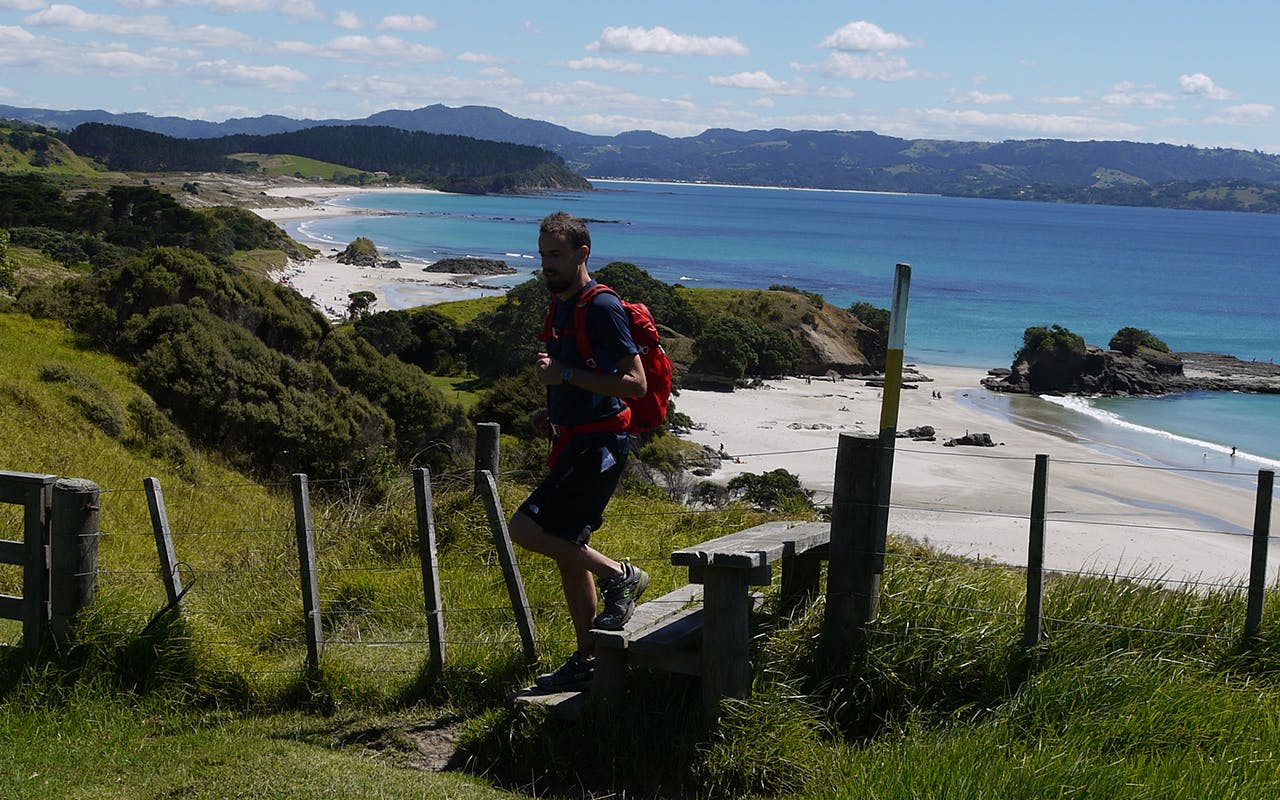- Area
- Tawharanui Regional Park
- Distance
- 5.91km
- Time
- 1-3hr
- Grade
- Easy
- Access
- 85km north of Auckland. Follow the signs to Matakana and at the Omaha turnoff turn right onto Takatu Rd
- Map
- AZ32
- Notes & Map
- Tawharanui Regional Park (pdf, 452 KB)
- GPX File
- Tawharanui (gpx, yo 10 KB)
- Your device does not support GPX files. Please try a different device.
Tawharanui is a large park north of Auckland with a multitude of walking tracks and recreation opportunities including bird watching. You,ll need a couple of days to fully explore the park’s network of tracks, but if you’ve just got one day up your sleeve, then walking the ecology trail is probably the best bet.
A 2.5km predator proof fence has made the park a haven for native bird species and these can be best seen and heard on the Ecology Trail. Here, native birds live in their droves and the air is alive with the sound of cicada and the birdsong of wood pigeon, tui, bellbird, North Island robin and whiteheads.
Start out walking along the North Coast Track which climbs above Anchor Bay and leads towards Tokatu Point for about 2km. This track passes through farmland and provides no shelter from the sun, or rain, but the pay-off is great views of the sea and Kawerau, Little Barrier and Great Barrier islands.
The North Coast Track begins to circle around on itself and melds into the South Coast Track which leads all the way to the park’s entrance – a round trip of two or three hours. But to experience the birdlife, you’ll need to take Fishermans Track which joins up with the Ecology Trail.
The Ecology Trail is a self-guided track which can be made more enjoyable with the ecology trail brochure found at the information kiosk near Anchor Bay.
While the bush here is mostly regenerating, there are plenty of examples of tall and ancient-looking trees. Before long you’ll encounter all manner of birds, with bellbirds appearing to be the most common and vocal.
The trail follows a small creek for a while and is crossed on a small bridge. At this point there is detergent and a scrubbing brush to clean the soles of boots with to help avoid spreading kauri dieback disease.
The trail drops down to the coast for the final kilometre back to Anchor Bay.






